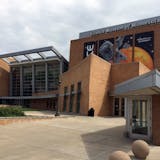The Federal Reserve, it seems, is still waiting for the economic equivalent of perfection and risks squandering a good opportunity to begin normalizing interest rates.
While this may be part of a well-intentioned effort to avoid a market shock when the increase finally comes, every delay only further reinforces unrealistically dovish expectations.
Stocks rose last week when the Fed came out with no change in policy and an equivocal statement giving plausible cover for waiting several months before any hike in rates.
The Federal Open Market Committee said "economic activity has been expanding moderately in recent months," while dropping an earlier reference to activity having changed little in the first quarter. The FOMC upgraded its assessment of labor markets but chose to look through further recent declines in energy and commodity prices.
All of that seemed reasonably hawkish, and on its own might have primed the market for September action, but for the insertion of the word "nearly" in front of "balanced" when describing the upside and downside risks to the Fed's mandates.
That implies that more evidence will need to be seen before a hike can come, a position that ignores the trend of positive data.
This sends the unwise message to investors that anything less than perfection from the economy requires remedial monetary policy. It isn't just that this will tend to encourage investors to take on too much risk, it is also that the jolt when rates must eventually rise will be worse.
The real risk is that the Fed has not been frank enough about the possibility of a September hike.



